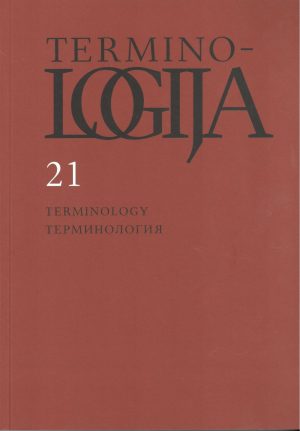Mikroturinio ir struktūrinio turinio (Įskaitant terminiją ir kitus kalbos bei turinio išteklius) skirtumai ir panašumai
Differences and Similarities of Micro-content and Structured Content (Including Terminologies and Other Language and Content Resources)
Author(s): Blanca Stella Giraldo Pérez, Christian GalinskiSubject(s): Theoretical Linguistics, Applied Linguistics, Lexis, Semantics, Descriptive linguistics, ICT Information and Communications Technologies
Published by: Lietuvių Kalbos Institutas
Keywords: eContent; content interoperability; lexical semantics; structured content, microcontent; terminology and other language and content resources (TLCR); factual knowledge; micro learning objects (MLO);
Summary/Abstract: Previous contributions have shown that the concept of content – here in the meaning of digital content generally referred to as ‘eContent’ – is subject to an array of interpretations depending on different purposes following diverging interests. As there are many kinds of eContent, there consequently are several kinds of content management systems (CMS): “In reality, a CMS is a concept rather than a product. It is a concept that embraces a set of processes. Institutional needs are often highly individual (reflecting the heterogeneity of their processes and back-end information systems) …Moreover, the boundaries of the CMS space are blurred. Substantial overlaps exist with document management systems, knowledge management systems, enterprise application integration systems, e-commerce systems and portals.
Journal: Terminologija
- Issue Year: 2014
- Issue No: 21
- Page Range: 10-27
- Page Count: 18
- Language: English

